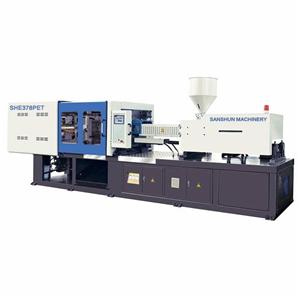- Home
- >
- News & Resources
- >
- Our Blog
- >
- Analyze the causes of excessive burrs in injection molded products
The burrs mostly occur on the separating and joining surfaces, that is, between the movable mold and the static mold, the sliding part of the slider, the gap of the insert, the hole of the ejector, etc., the melt flows into the molten material, and the excess flash burr is formed on the part.
Such flash burrs will act as leverage during molding and will further increase the flash burrs, which will cause partial depression of the mold. When formed, the flash burrs will enter a vicious circle of increase. Therefore, if flash burrs are found at the beginning, the mold must be trimmed as soon as possible.
There are several reasons for burrs
1. Insufficient clamping force
Compared with the projected area of the molded part, if the clamping force is small, there will be gaps between the moving and static molds due to the injection pressure, which will inevitably cause flash burrs. Especially when the side gate is placed on the hole near the center of the part, because this kind of molding gate requires a large injection pressure, it is very prone to burrs.
This defect can be eliminated by reducing the injection pressure or increasing the clamping force. It is sometimes very effective to switch to low-pressure molding with good fluidity according to the specific situation.
2. Partial mold coordination is not tight
First, discuss the problem of inaccurate clamping of the dynamic and static molds. Although the molds themselves are tightly closed, when the toggle lever-type clamping mechanism is used for injection molding, it is often caused by poor mold parallelism or poor adjustment of the clamping device. Such as the phenomenon that the left and right sides are not balanced, that is, only one side is locked on the left and right sides, and the other side is not closely attached. At this time, the tie rods (two or four tie rods) must be adjusted to make them stretch evenly.
Secondly, there are also lax adhesions due to poor mold development. Especially when there is a molding hole in the center of the workpiece, due to the supporting effect of this part, burrs are also easy to appear when the clamping force is insufficient.
In addition, it is a sliding core. Because the sliding core is an active mechanism, burrs are often generated, so the cooperation of the sliding core is very important. Especially for the Huff mold with left and right parting, the projected area of its side is also affected by the molding pressure. If the design cannot fully withstand this pressure, burrs will often appear. Regarding insert gaps and ejector pin holes, not only will the vicious circle of burrs increase, but also the ejection resistance will increase.
3. Caused by mold deflection
If the original degree of the mold is insufficient, it will be deflected by the injection pressure. At this time, if there is a hole near the center, burrs will be generated around the hole; and when the center hole is used to open the side gate, the hole and the periphery of the runner will also be generated. glitch. The burr caused by this reason is caused by poor mold making, so it is difficult to repair. Reinforcing molds can reduce burrs.
4. Plastic fluidity is too good
Simply because the plastic has too good fluidity, it is not theoretically the cause of the burr. However, when the fluidity of the plastic is too good, even the tiny gaps can be penetrated by the plastic, so burrs are prone to appear. To eliminate this kind of burrs, you can reduce the melt temperature or injection pressure, and also reduce the mold temperature or injection speed.
5. Too much-molten material is injected
This is not the direct cause of the glitch. In order to prevent shrinkage, it is wrong to inject too much-molten material. It is necessary to increase the injection time or holding time to form (refer to shrinkage).
6. Foreign matter on the mold surface
There are foreign objects on the mold clamping surface, which will inevitably produce burrs. To solve this problem, it is obviously necessary to clean the surface of the clean mold so that the clamping surface is closed.







